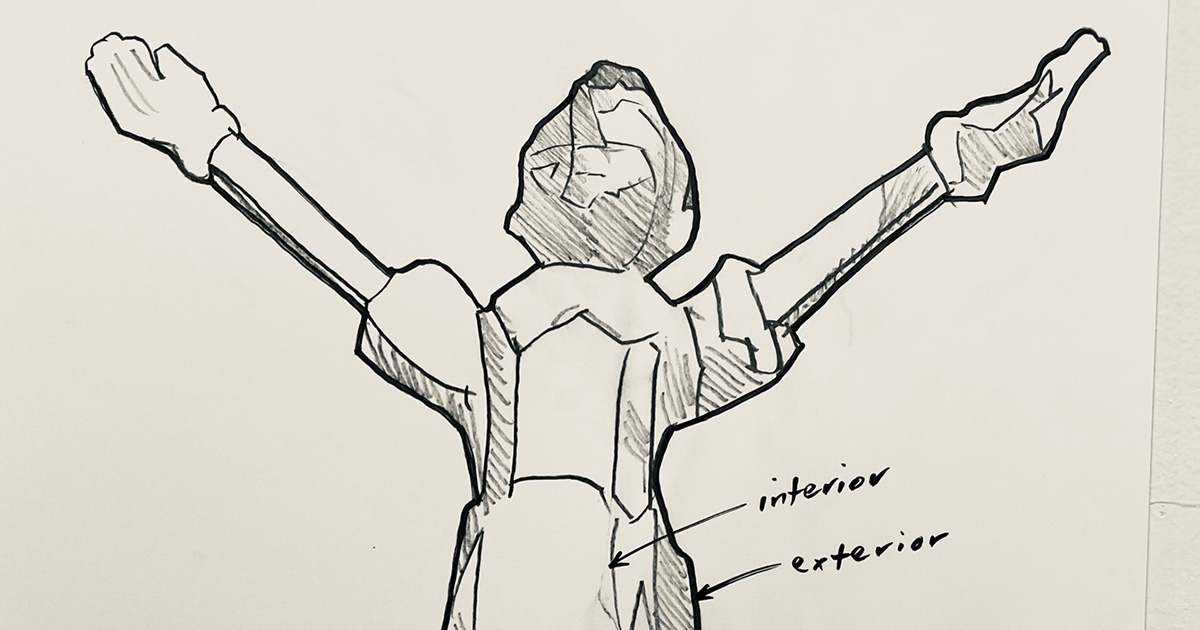- Art Home
- Exhibitions
-
Explore the Collection
- Explore the Collection Home
- African Art
- American Paintings, Sculpture and Drawings
- Contemporary
- Decorative Arts and Design
- East Asian Art
- European Paintings, Sculpture and Drawings
- Fashion Arts and Textiles
- Musical Instruments
- Indigenous American Art
- Photography
- Prints
- South Asian Art, Islamic Art and Antiquities
- Provenance and Cultural Property
- Conservation
- Meet the Curators
- Digital Resources
- Art Bridges Cohort Program
- Events & Programs Home
- Calendar
- Accessibility
- Adults
-
Families & Teens
- Families & Teens Home
- 10x10 Teen Art Expo
- Art on the Rise
- Art Together: Art Making for Families with Children Ages 3–5
- Babies Sing with May Festival Minis
- Boy Scouts / Girl Scouts
- CAM Kids Day
- Family Storytime and Gallery Walk
- Family Studio: Art Making for Families with Children Ages 6–12
- Games in the Galleries
- Members-Only Baby Tours
- Public Baby Tours
- REC Reads
- Rosenthal Education Center (REC)
- Saturday Morning Art Class
- See Play Learn Kits
- Summer Camp
- Teachers
- Community Outreach
- Fundraisers
- Plan Your Own Event

- Art Home
- Exhibitions
-
Explore the Collection
- Explore the Collection Home
- African Art
- American Paintings, Sculpture and Drawings
- Contemporary
- Decorative Arts and Design
- East Asian Art
- European Paintings, Sculpture and Drawings
- Fashion Arts and Textiles
- Musical Instruments
- Indigenous American Art
- Photography
- Prints
- South Asian Art, Islamic Art and Antiquities
- Provenance and Cultural Property
- Conservation
- Meet the Curators
- Digital Resources
- Art Bridges Cohort Program
- Events & Programs Home
- Calendar
- Accessibility
- Adults
-
Families & Teens
- Families & Teens Home
- 10x10 Teen Art Expo
- Art on the Rise
- Art Together: Art Making for Families with Children Ages 3–5
- Babies Sing with May Festival Minis
- Boy Scouts / Girl Scouts
- CAM Kids Day
- Family Storytime and Gallery Walk
- Family Studio: Art Making for Families with Children Ages 6–12
- Games in the Galleries
- Members-Only Baby Tours
- Public Baby Tours
- REC Reads
- Rosenthal Education Center (REC)
- Saturday Morning Art Class
- See Play Learn Kits
- Summer Camp
- Teachers
- Community Outreach
- Fundraisers
- Plan Your Own Event
Blog: CAM Uncovered
Blog: CAM Uncovered
- Home
- Plan Your Visit
-
Art
- Art Home
- Exhibitions
-
Explore the Collection
- Explore the Collection Home
- African Art
- American Paintings, Sculpture and Drawings
- Contemporary
- Decorative Arts and Design
- East Asian Art
- European Paintings, Sculpture and Drawings
- Fashion Arts and Textiles
- Musical Instruments
- Indigenous American Art
- Photography
- Prints
- South Asian Art, Islamic Art and Antiquities
- Provenance and Cultural Property
- Conservation
- Meet the Curators
- Digital Resources
- Art Bridges Cohort Program
-
Events & Programs
- Events & Programs Home
- Calendar
- Accessibility
- Adults
-
Families & Teens
- Families & Teens Home
- 10x10 Teen Art Expo
- Art on the Rise
- Art Together: Art Making for Families with Children Ages 3–5
- Babies Sing with May Festival Minis
- Boy Scouts / Girl Scouts
- CAM Kids Day
- Family Storytime and Gallery Walk
- Family Studio: Art Making for Families with Children Ages 6–12
- Games in the Galleries
- Members-Only Baby Tours
- Public Baby Tours
- REC Reads
- Rosenthal Education Center (REC)
- Saturday Morning Art Class
- See Play Learn Kits
- Summer Camp
- Teachers
- Community Outreach
- Fundraisers
- Plan Your Own Event
- Give & Join
- About
- Tickets
- Calendar
- Exhibitions
- Blog
- Shop
Art Climb: Creating a Landmark
by Franck Mercurio, Publications Editor
5/8/2025
Art Climb , outdoor art , sculpture , museum grounds
May 2025 marks the fifth anniversary of Art Climb! This high-profile landmark connects the museum’s hilltop location to the city and provides an outdoor experience combining landscape architecture and public art. This is the first of three posts celebrating Art Climb and its design, art, landscaping, and programming.
What does it take to create a landmark? It starts with a vision. The Cincinnati Art Museum began with the idea of constructing a museum to house an art collection for the public to enjoy. In 1886, five years after the founding of the Cincinnati Museum Association, a new landmark building overlooked the city from its hilltop perch in Eden Park.
Over the decades, as Eden Park’s trees grew taller and denser on the surrounding hillsides, the woods became a kind of barrier separating the museum from its adjacent neighborhoods. The “art fortress on the hill” became less accessible in the minds of many, both physically and socially.
Fast forward to 2015. New leadership under Cameron Kitchin, the Louis & Louise Dieterle Nippert Director of the museum, questioned how to remove barriers and welcome more visitors. Brainstorming meetings and design charettes led to Art Climb, a nine-story staircase zigzagging through a wooded hillside and connecting the corner of Gilbert Avenue and Eden Park Drive to the museum campus above.
Many partners contributed to Kitchin’s vision, from designers and engineers to curators and consultants. Landscape design firm Human Nature marked which trees could be saved. Strand Associates consulted on structural engineering. Brave Berlin developed ideas to create a key landmark. The team — including museum staff and board members — participated in a charette to discuss how to make the vision a reality.
Kitchin challenged charette participants to think beyond a simple staircase and envision a hillside gathering place. The result, designed by Emersion Design and built by Turner Construction, included the now-iconic 164 limestone steps incorporating landings, “art platforms,” public sculpture, picnic tables, seating, and a programmable multi-colored lighting system. The combined efforts transformed the hillside into an outdoor art experience.
After three years of construction, Art Climb opened to the public on May 8, 2020, and the museum unveiled a new Cincinnati landmark.
Today, Art Climb welcomes more than 100,000 visitors each year and serves as an integral part of a strategic plan (along with the Wyler Family Drive, multiple pathways, and outdoor sculptures) to activate the museum grounds and strengthen the museum’s physical connections to the surrounding neighborhoods and city. Plans are currently underway to make Art Climb more accessible by accommodating wheelchairs and strollers, removing even more barriers to the museum.
Next up: “Art Climb: Landscaping and Horticulture”
The Cincinnati Art Museum’s Art Climb was made possible by many generous donors including support from the Procter & Gamble Fund and the Cincinnati Development Fund.

Art Climb connecting the intersection of Gilbert Avenue and Eden Park Drive with the Cincinnati Art Museum shortly after completion in 2020.

Aerial view of Art Climb shortly after completion in 2020.
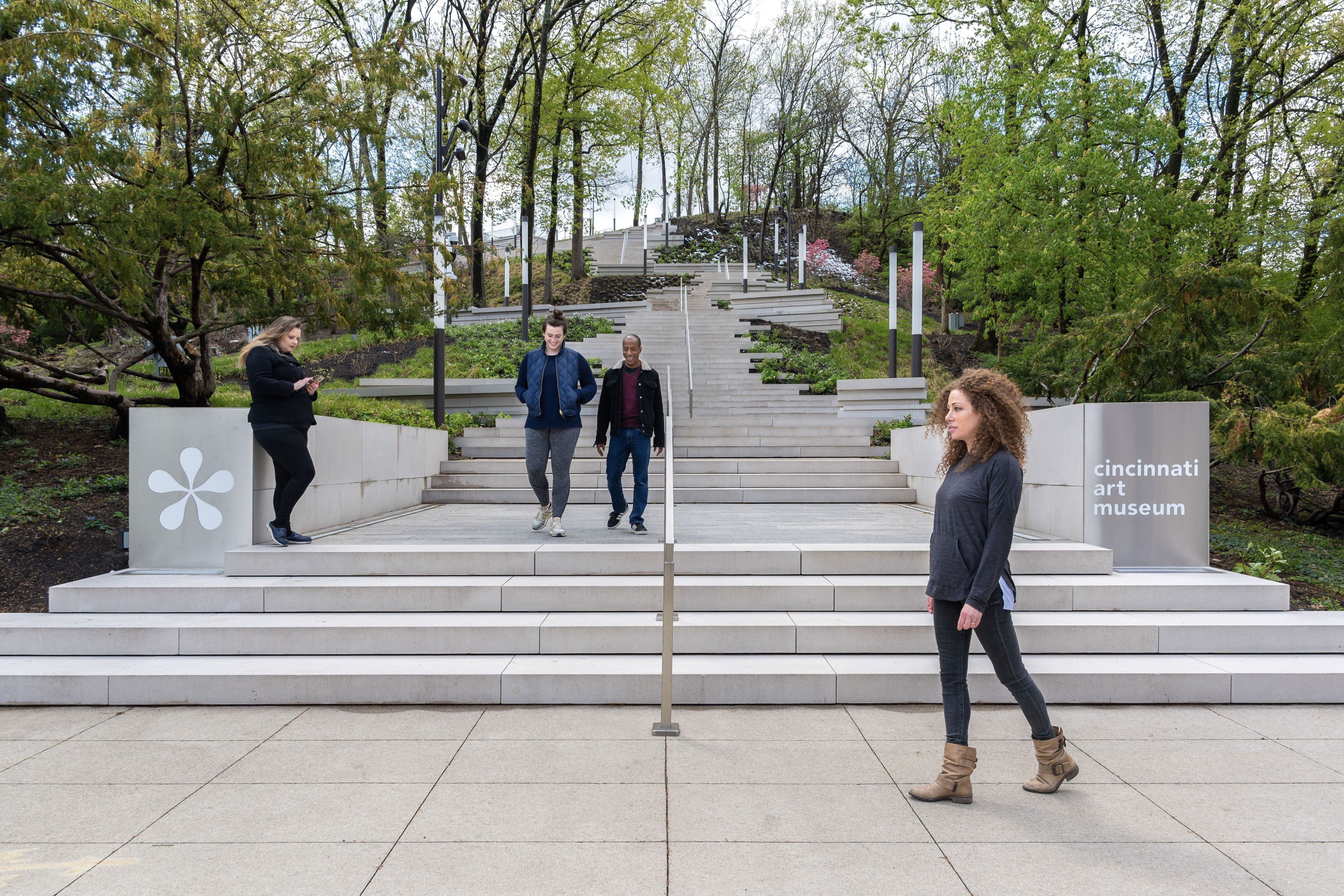
View of Art Climb at street level looking up the hill towards the museum.

Punctuating the top of Art Climb is Skybound, a sculpture by Barton Rubenstein.
Barton Rubenstein (American, b. 1962), Skybound, 2012, brushed stainless steel, on loan from the Pyramid Hill Sculpture Park & Museum
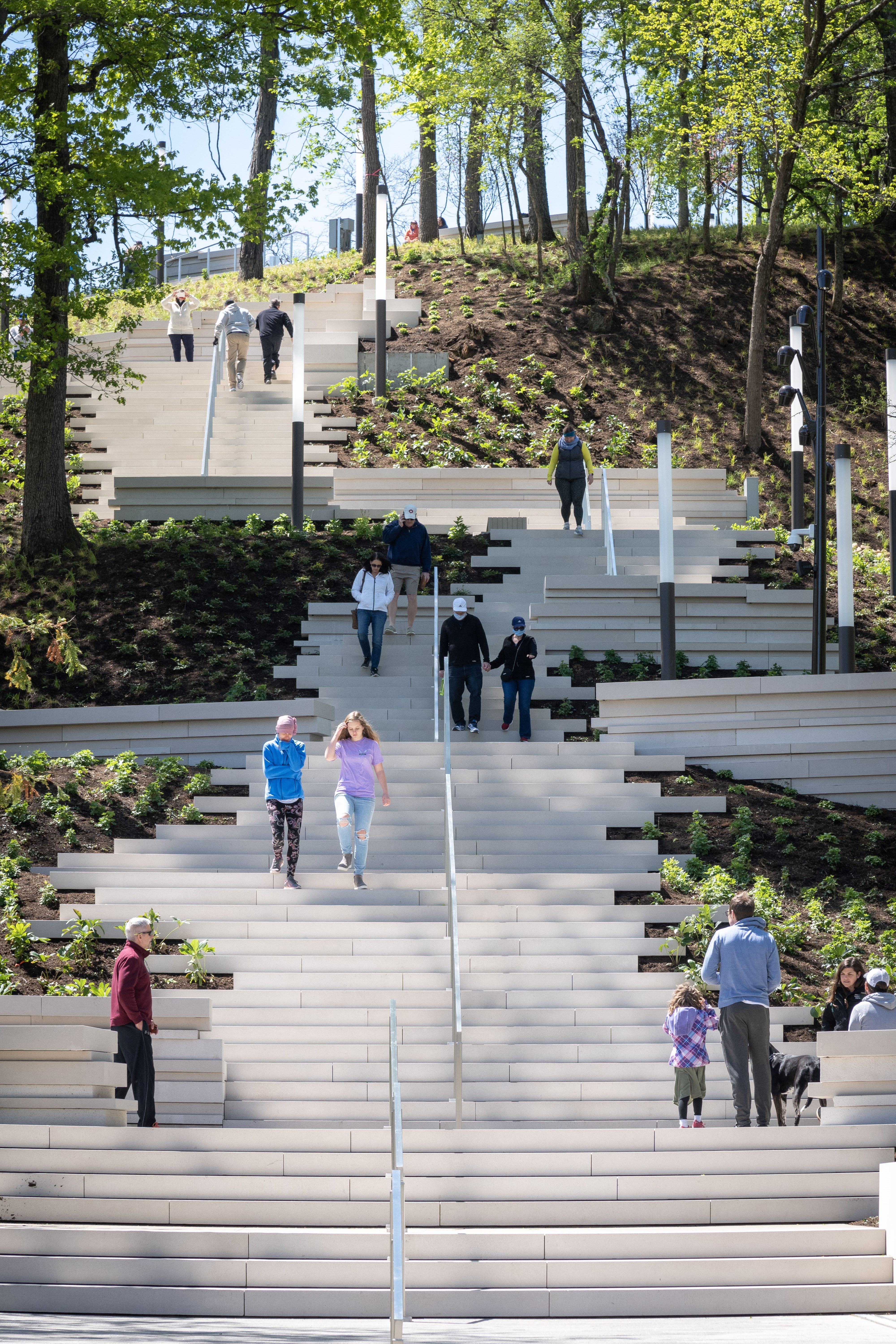
People enjoying Art Climb.
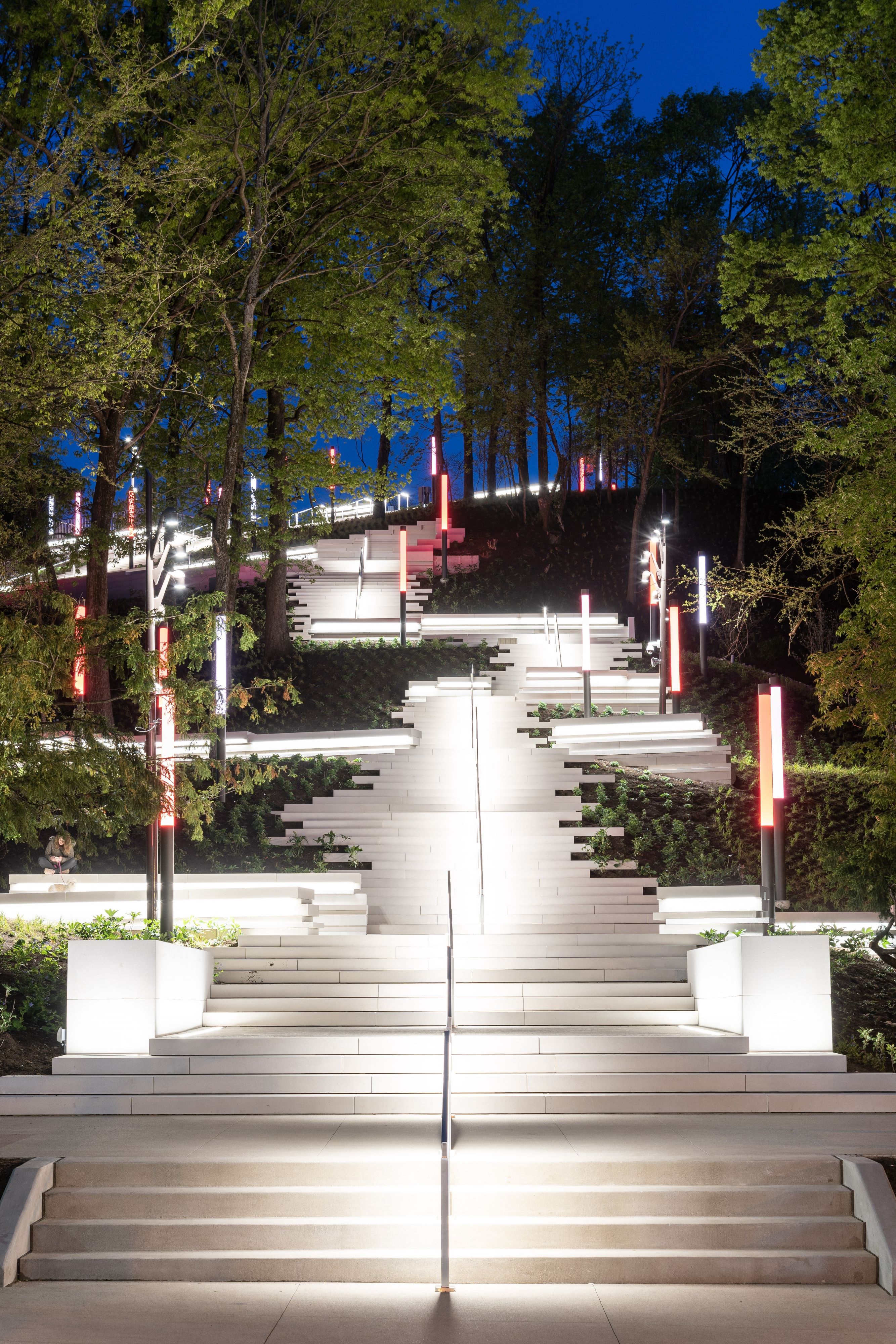
Art Climb lit at night.
Related Blog Posts
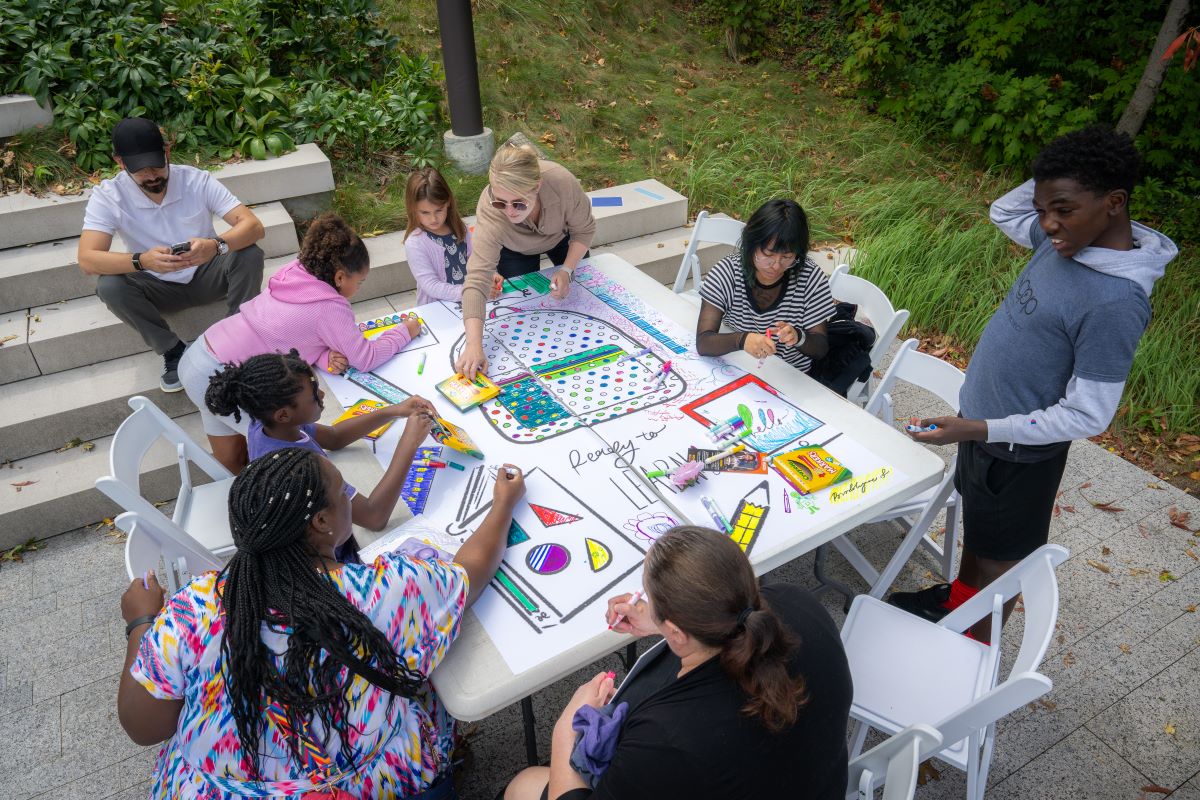
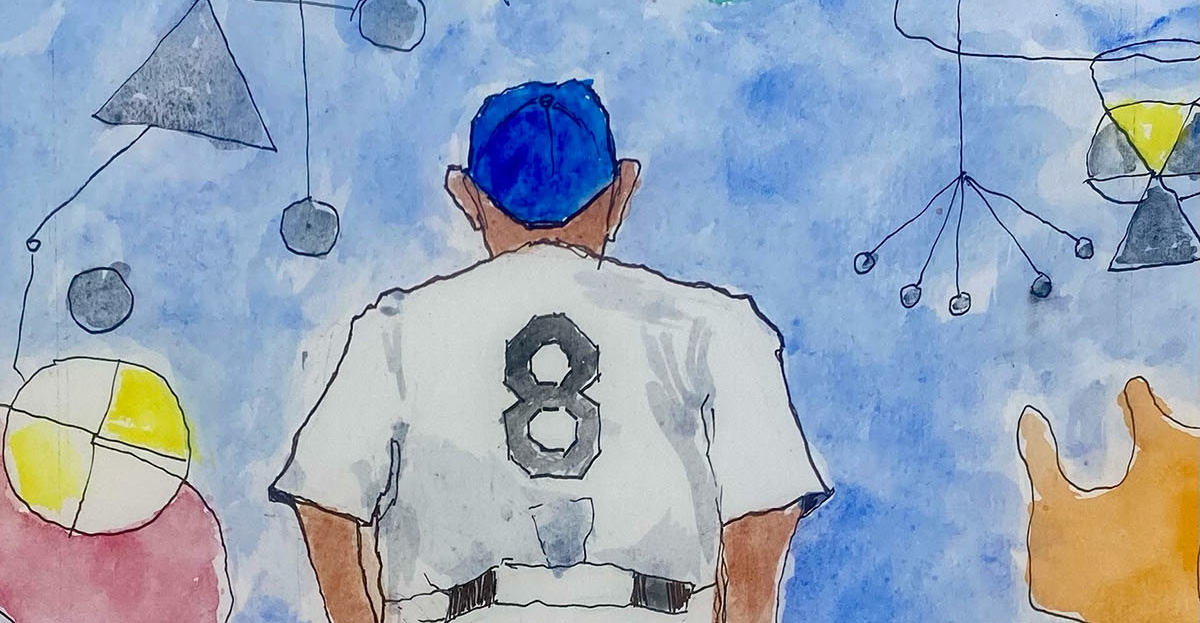
Cincinnati, OH 45202
Toll Free: 1 (877) 472-4226
Museum Hours
Museum Shop
Terrace Café
Library
Cincinnati Art Museum is supported by the tens of thousands of people who give generously to the annual ArtsWave Campaign, the region's primary source for arts funding.

Free general admission to the Cincinnati Art Museum is made possible by a gift from the Rosenthal Family Foundation. Exhibition pricing may vary. Parking at the Cincinnati Art Museum is free.
Generous support for our extended Thursday hours is provided by Art Bridges Foundation’s Access for All program.

General operating support provided by:



